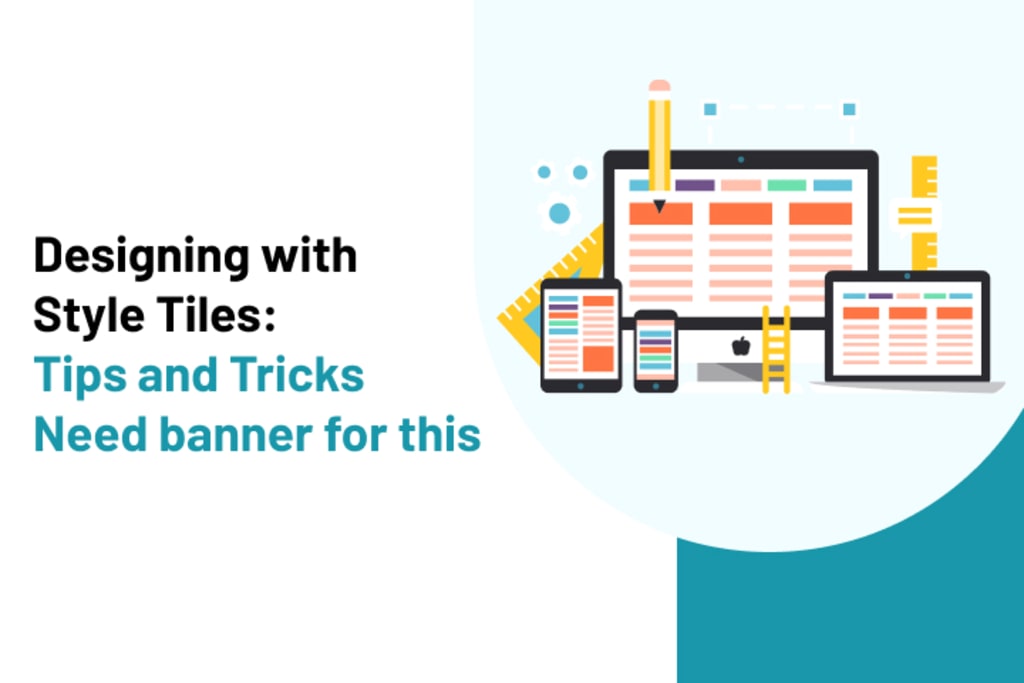When and How to Use Style Tiles in Web Design?
What Are the Best Practices for Using Style Tiles in Web Design?

Style tiles represent the design concept applied in any web design project. They effectively convey the expected aesthetic with the help of typography, color schemes, and stylistic elements. When paired with wireframes, site maps, and other user interface components, style tiles provide a comprehensive narrative that clients can easily understand and appreciate. This article will outline effective strategies for maximizing the benefits of this practical approach.
What is included in Style Tiles?
While talking about a style tile comprises representative elements from a user interface, establishes a color palette, illustrates the application of typographic design principles, and showcases the connection between the client's brand and the proposed visual approach. To illustrate, if a client has described their business as "trustworthy" or "reliable," the style tile should visually embody these qualities.
Above all, style tiles provide a foundation for dialogue and obtaining clarity regarding the client's business objectives and individual preferences.
When to utilize Style Tiles?
Style tiles present a versatile entry point for effectively delineating the visual presentation of a website in a manner that is easily comprehensible for clients. They can be perceived as an intermediary amalgamation of a collage of moods and a concrete prototype. Their purpose is to establish and convey how a visual style will be implemented across the entirety of a website, encompassing both mobiles as well as desktop user interfaces.
Style tiles are the ideal choice when a mood board lacks specificity and a comprehensive design is overly rigid. They establish a correlation with tangible interface components while refraining from dictating the layout. This approach particularly suits clients with established brands and requires a seamless transition to the digital world. Although the term "mood" typically aligns with brand visibility and designing its identity. The term "style" was intentionally selected to evoke associations with "cascading stylesheets" and emphasize that Style Tiles are exclusively tailored to web design.
Imagine How a Style Tile look
You can go as creative as you wish regarding the style tile of your website. No exact rule is there for style tiles. Just make sure that you are not misinterpreting those as mood boards because they are unable to represent a visual language.
What are the Benefits of Adding Style Tiles in Web Design?
The benefits of adding style tiles to web design are quite impressive, and they can actually positively impact your website.
Encourages Early Communication and Collaboration
A style tile is a fantastic tool for encouraging effective and early communication between the design team and the client. It’s a visual representation of a brand's attributes displayed in a simple, easy-to-digest format. By using a style tile early in the project, designers can solicit feedback from the client regarding the color scheme, typography, imagery, and other visual elements. This early collaboration fosters a clear understanding of the brand's identity, allowing for more efficient revisions and a smoother design process overall.
Offers a Precise Brand Aesthetic Preview
Rather than diving straight into designing entire web pages, a style tile gives a precise overview of what to expect aesthetically from the brand. This includes color palettes, font styles, textures, patterns, button styles, and other key design elements. This compact, digestible preview helps align the designer's vision with the client's expectations, preventing any major surprises down the line.
Streamlines the Design Process
Style tiles facilitate the establishment of a consistent style guide, creating a uniform design across all web pages and platforms. It’s a "cheat sheet" for the designer, providing a quick reference to the agreed-upon style. This speeds up the process of design and coding and ensures consistency throughout the website. A consistent design helps to enhance the user experience, as it brings predictability and coherence to the site navigation.
Reduces Time and Resource Waste
Creating a full-fledged mockup or prototype can be time-consuming and potentially wasteful if the client is not satisfied with the design direction. With style tiles, however, designers can quickly create and modify these visual guides without investing too much time and resources. As a result, this allows for efficient utilization of resources, quick iterations, and a more agile design process.
Enhances User Experience
Ultimately, a well-crafted style tile not only serves the design team and the client but also greatly enhances the end user’s experience. By having a cohesive visual identity, websites are more intuitive and easy to navigate. This aids in making the user journey smoother, encouraging them to interact more with the site and generate more revenues.
Facilitates Design Scalability
Style tiles can be easily updated and expanded as the brand evolves. They make it easier to add new design elements while ensuring that they remain consistent with the existing design.
As a result, they facilitate the scalability of the design, making it easier to maintain and update the website over time.
In conclusion, style tiles play a pivotal role in the web design process. They are a bridge between the client’s vision and the designer's interpretation, serving as a visual translator. Incorporating style tiles into the design process can greatly enhance communication, efficiency, consistency, and, ultimately, the end user’s experience. For the best web design services, it is recommended to hire a reliable web design company.
Tips to Create Successful Style Titles for Web Design
Creating successful style titles for web design positively impacts your website. Style titles, also known as headers or subheadings, are significant parts of your content while making it look professional and easy to navigate.
Here are some tips on how to use style titles effectively:
Use Hierarchy
Implement a clear hierarchy of style titles to guide users through your content. Start with a primary title (H1) at the top of the page, followed by secondary titles (H2), and so on. This hierarchy helps users quickly grasp the structure of your webpage and find the information they need.
Reflect Content Structure
Your style titles should reflect the logical structure and organization of your content. Each style title should summarize the content beneath it and provide a glimpse of what readers can expect. Think of style titles as signposts that guide users through different sections or topics.
Keep it Concise
Style titles should be concise and to the point. Aim to capture the essence of the content in a few words. Short and snappy style titles are more likely to grab attention and entice users to continue reading.
Be Descriptive and go with the flow
Make sure your style titles accurately describe the content that follows. Use keywords and phrases relevant to the topic so search engines can find your website.
Maintain Consistency
Consistency in style titles helps establish a clear visual identity, and the overall user experience gets better. Use the same font, size, color, and formatting style for the style titles of the entire website. Thus it will provide a sense of familiarity, and users can navigate easily.
Optimize for SEO
Style titles are crucial in SEO. They provide context and relevance to the search engines. Include relevant keywords in your style titles, and your SEO rank will improve. Your website will be more visible.
Use Formatting
Formatting options like bold, italics or different font sizes can be used to add emphasis or highlight important information within your style titles. However, ensure that the formatting choices are consistent and do not distract from the readability of the titles.
Consider Visual Hierarchy
Along with the heading tags (H1, H2, and more), pay attention to every visual detail. Larger and bolder titles grab more attention, while smaller titles can be used for sub-sections or less prominent information.
Test and Iterate
It's important to test the effectiveness of your style titles and make adjustments as needed. Monitor user engagement metrics, conduct A/B testing, and gather feedback to identify areas where improvements can be made.
The primary goal of style titles is to create a better user experience and make your content more accessible. With these tips, you can customize the style titles for a specific website. Thus you can add successful style titles for your web design.
About the Creator
Jessica Bennett
Jessica is an individual contributor for various leading publications. Writing about technology, design and the latest innovations is her primary knack. She also works for Unified Infotech, a technology service provider serving startups.






Comments
There are no comments for this story
Be the first to respond and start the conversation.